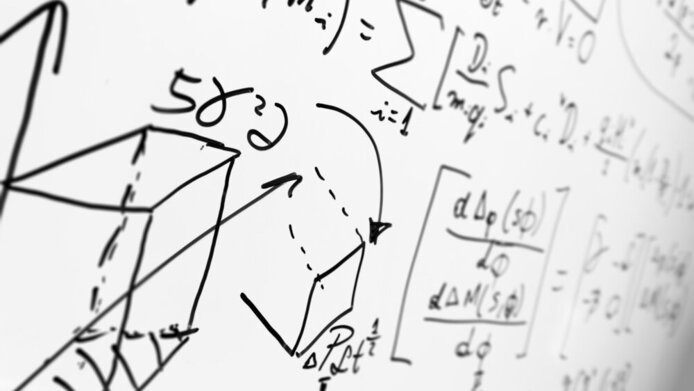How mathematics became what it is today

Mathematics is a special science in the sense that it is not entirely clear what it is about. How real mathematical objects are and what significance this question has is something people have been pondering since ancient times. For the practice of mathematics, it is sufficient to define certain properties of mathematical objects, such as natural numbers, using some simple statements called axioms. But this does not explain what numbers actually are. A widespread approach today goes by the name of "structuralism": according to structuralism, the axioms themselves define the mathematical objects – know the axioms, and you know enough. From this perspective, mathematics is not about numbers, but about abstract structures. What sounds like an excessively subtle point has not only had a great influence on the development of mathematics itself but also on modern science during the 20th century, which is shaping our lives today. A group led by the philosopher Georg Schiemer from the Institute for Philosophy at the University of Vienna is now investigating how this view emerged. In a project funded by the Austrian Science Fund FWF, the researchers traced the origins of structuralism back to the first half of the 20th century and found connections leading to Rudolf Carnap and the Vienna Circle (Wiener Kreis), among others. Axioms as definitions “One focus area of the project was the history of mathematics in the 19th and early 20th century,” says the principal investigator Georg Schiemer. “We explored certain developments in 19th-century geometry that led to a structural turnaround.” Originally, axioms were intended to describe known objects – be they real or imaginary. “There was an evolution towards understanding axiomatic systems to be implicit definitions of abstract structures.” In this context, “implicit” means that the objects are explained exclusively by the axioms. “This was the step from a descriptive viewpoint to an understanding of axioms as definitions”, notes Schiemer in the interview with scilog. The German mathematicians David Hilbert and Richard Dedekind, as well as the group led by the Italian Guiseppe Peano, were involved in this development. Among other things, they explored how to determine the consistency or independence of axioms. Birth of modern disciplines Originally, axioms were designed to represent something accepted as known. If the representation was correct, the question about the consistency of axioms did not even arise. Hilbert and his colleagues wanted to know how to prove the consistency or independence of axioms in purely formal terms. Such proof made it possible to set up axioms first and wonder about what they actually described later. “It was the birth of modern disciplines, which today belong to the field of logic or mathematical logic, especially model theory and theory of proof,” explains Schiemer. David Hilbert was also the mathematician who, a few decades later, formulated his famous “Programme” in which he called for mathematics to be put on a solid footing by proving that all axioms were free of contradictions. As we know, the venture failed, but it paved the way for mathematical logic, a discipline to which we owe not only a deeper understanding of mathematics, but also the concept of the computer. “Hilbert’s Programme builds directly on these earlier works,” emphasises Schiemer. Structuralism in Philosophy “The second area we explored in the project was how philosophers in the early 20th century reflected these 19th-century developments in mathematics,” notes Schiemer. “Structuralism is the dominant position in the contemporary philosophy of mathematics.” Schiemer refers in particular to Rudolf Carnap, an important representative of the Vienna Circle, who was looking for a philosophy based on exact methods. “In the 1920s and 1930s, Carnap gave a great deal of thought to these developments in mathematics.” The philosopher Ernst Cassirer was also actively involved in this field. Carnap and Cassirer thus anticipated what today is considered to be a natural notion of mathematics. “The basic tenet of structuralism can already be found in philosophy in the early 20th century,” says Georg Schiemer. A working group on structuralism “What we have tried to do is to explain historically and analyse in philosophical terms how mathematics became what it is today,” relates Schiemer. His work on the FWF project helped the philosopher to land an ERC Starting Grant from the European Commission and to establish an interdisciplinary research group on this topic with which to continue this endeavour.
Personal details Georg Schiemer is an Assistant Professor at the Department of Philosophy at the University of Vienna and Research Fellow at the Munich Center for Mathematical Philosophy (MCMP). His areas of interest are the history of logic, analytical philosophy and philosophy of mathematics. He also was Erwin Schrödinger fellow funded by the Austrian Science Fund FWF.
Publications





